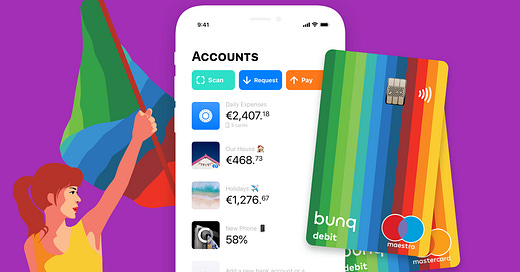Bunq, Without (Much) Interchange or Lending, Is Profitable. But Can It Conquer America?
Zurp's Got Issues, Are "Dark Patterns" Abusive, Fintech Funding Jumps (but don't get too excited)
Hey all, Jason here. Happy Easter and Passover to those who may be celebrating!
Thanks to the generosity of paying subscribers of this newsletter, I just made a donation to the Grameen Foundation — you can learn more about the organization (and donate yourself) here.
A reminder that 15% of subscription revenue goes to charity — the next organization we’ll…



